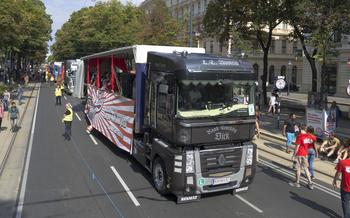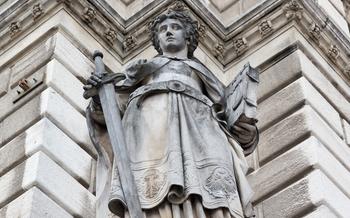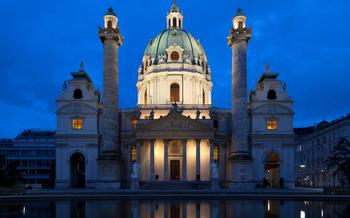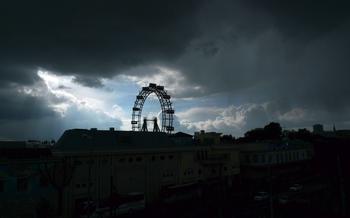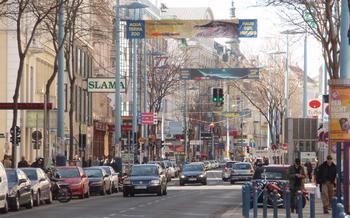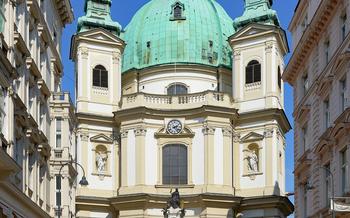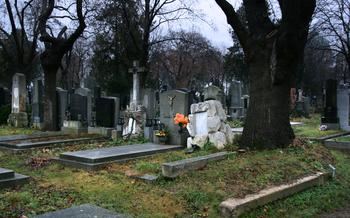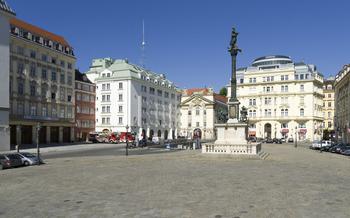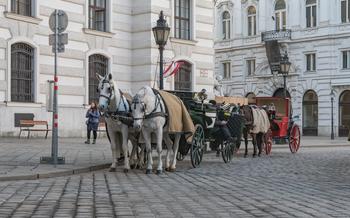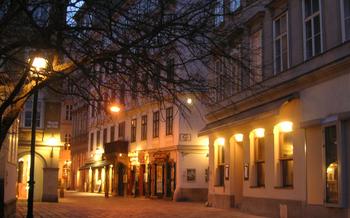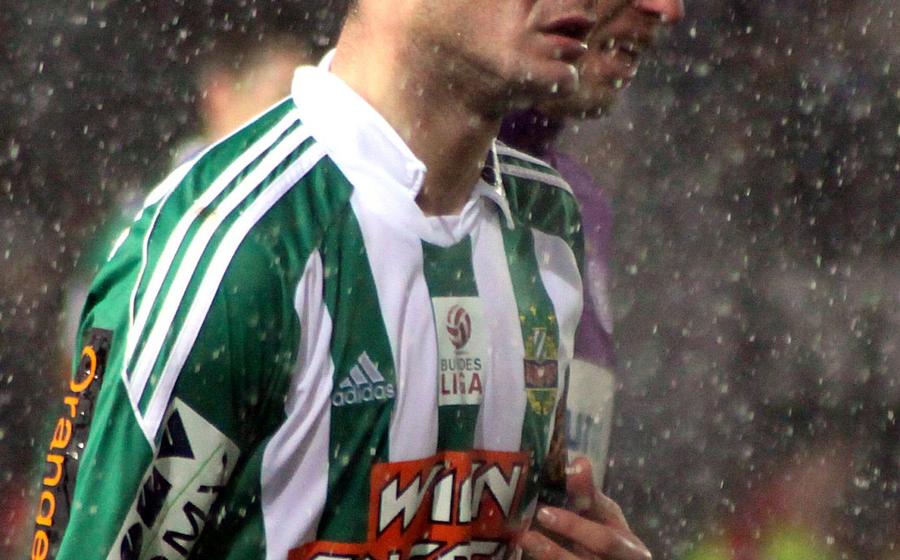
Vienna Crime Museum
- A Journey Through Vienna's Dark Side
- Methods of Detection and Punishment
- The Executioner's Role
- Crime Prevention and Rehabilitation
- The Victims' Perspectives
- Cultural Depictions of Crime
- International Collaborations
- Insider Tip:
A Journey Through Vienna's Dark Side
Vienna, renowned for its imperial grandeur and cultural legacy, harbors a lesser-known side—a world of crime, intrigue, and dark secrets. Delve into the heart of this hidden realm at the Vienna Crime Museum, a captivating institution that unveils the city's fascinating criminal history. Located in a historic building on the banks of the Danube Canal, the museum offers visitors a journey through the annals of Vienna's underworld. Step into its dimly lit halls, and prepare to be captivated by a collection of artifacts, documents, and multimedia exhibits that bring to life the stories of infamous criminals, notorious crimes, and the methods used to solve them.
Admission to the Vienna Crime Museum is reasonably priced, and guided tours are available in multiple languages. The museum's knowledgeable staff is always ready to provide insights and context, making your visit even more enriching. One particularly intriguing artifact on display is a letter written by Jack Unterweger, a serial killer who terrorized Vienna in the 1990s. In the letter, Unterweger confesses to his crimes, providing a chilling glimpse into the mind of a murderer.
Methods of Detection and Punishment
The Vienna Crime Museum also delves into the evolution of forensic techniques, showcasing how crime-fighting strategies have transformed over the years. From the early days of fingerprinting to the advent of DNA analysis, the museum highlights the crucial role of scientific advancements in solving complex cases. Visitors can learn about the pioneering work of the Vienna Police Department, which has been at the forefront of developing innovative methods to combat crime.
One intriguing anecdote on display is the case of a serial killer who was apprehended using a groundbreaking forensic technique. In the 1980s, a series of brutal murders left Viennese authorities baffled. With no witnesses or clear leads, the case seemed unsolvable. However, a breakthrough came when forensic experts employed a novel DNA profiling method, which allowed them to link the crimes to a single perpetrator. This marked one of the earliest successful applications of DNA technology in criminal investigations, revolutionizing crime-solving techniques worldwide.
The Executioner's Role
In Vienna's tumultuous past, the executioner played a grim and controversial role. Appointed by the city council, these individuals were responsible for carrying out death sentences, a duty that required both physical strength and emotional resilience.
Throughout the centuries, various methods of execution were employed, reflecting the evolving attitudes towards capital punishment. Beheading, hanging, and the guillotine were among the most common methods, each associated with its own set of rituals and traditions.
Social attitudes towards executioners were complex and often ambivalent. While they were seen as essential figures in upholding justice, they were also feared and ostracized due to their association with death. Executioners and their families often faced discrimination and social isolation.
One legendary executioner who became a controversial figure was Josef Lang. Nicknamed "Peperl," he served as Vienna's executioner for over two decades, during which time he carried out hundreds of executions. Lang's notoriety stemmed from his skill and efficiency in performing his duties, as well as his apparent lack of remorse. He once famously remarked, "I sleep better after an execution than after a good meal."
Lang's career came to an abrupt end in 1876 when he was executed himself for the murder of his mistress. His death marked the end of an era, as capital punishment was abolished in Austria shortly thereafter.
Crime Prevention and Rehabilitation
In Vienna, significant efforts are dedicated to preventing crime and rehabilitating offenders. The city's law enforcement agencies work closely with social services and community programs to address the root causes of crime and provide support to those who have committed offenses. These initiatives aim to foster a safer and more inclusive society, where individuals have the opportunity to turn their lives around and contribute positively to the community.
One notable success story is that of Karl, a former petty criminal who spent several years in prison. After his release, he struggled to find employment and support, but he was determined to change his life. Through a community program, he received job training and counseling, which helped him to develop new skills and break away from his criminal past. Today, Karl is a respected member of society, working as a chef and mentoring other former offenders.
Vienna's commitment to rehabilitation is also evident in its prison system. The city's prisons emphasize education, vocational training, and psychological support, empowering inmates with the skills and resources they need to successfully reintegrate into society. This approach has been instrumental in reducing recidivism rates and promoting positive outcomes for offenders.
By investing in crime prevention and rehabilitation programs, Vienna is creating a safer and more just society for all. These initiatives provide individuals with the opportunity to overcome their challenges, break free from the cycle of crime, and make a positive impact on their communities.
The Victims' Perspectives
In the realm of crime, the spotlight often falls on the perpetrators, their motives, and the intricacies of their actions. However, it is essential to remember the profound impact crime has on its victims, whose lives are forever altered in its wake. The Vienna Crime Museum sheds light on the experiences and struggles of these individuals, providing a platform for their stories to be heard.
One such story is that of Anna, a young woman who fell victim to a violent assault. The attack left her with both physical and emotional scars, shattering her sense of security and upending her life. The museum's exhibits allowed Anna to confront her trauma in a safe and supportive environment, providing her with a space to process her emotions and seek healing.
Through interactive displays and personal accounts, the museum invites visitors to empathize with the victims of crime, understanding the lasting consequences that extend beyond the initial incident. It highlights the importance of victim support services, which play a crucial role in helping individuals rebuild their lives and find justice.
Whether it's through support groups, counseling, or legal assistance, the Vienna Crime Museum recognizes the significance of empowering victims and giving them a voice. Their stories serve as a powerful reminder that crime is not just a statistic but a deeply personal experience that can leave an enduring impact on individuals, families, and communities.
Cultural Depictions of Crime
Vienna's rich cultural tapestry is deeply intertwined with its criminal history, inspiring numerous works of literature, art, and film. From the haunting tales of Arthur Schnitzler and Stefan Zweig to the gritty realism of Josef Roth and Heimito von Doderer, Viennese literature has delved into the dark recesses of the human psyche, exploring the motivations and consequences of crime.
In the realm of art, Egon Schiele's provocative paintings and Gustav Klimt's symbolic works often hinted at the darker aspects of Viennese society, capturing the tension between desire and morality. The city's vibrant film scene has also tackled crime-related themes, with classics like "The Third Man" and "Before Sunrise" offering nuanced portrayals of criminal characters and their impact on society.
One particularly striking example of the cultural depiction of crime in Vienna is the 1924 film "Waxworks," directed by Paul Leni. This expressionist masterpiece tells the story of a wax museum owner who brings his wax figures to life, leading to a series of gruesome murders. The film's eerie atmosphere and twisted plot perfectly capture the sense of unease and moral ambiguity that characterized Vienna during the interwar period.
These cultural depictions of crime not only provide a glimpse into the criminal underworld of Vienna but also reflect the city's complex social and psychological landscape. Through literature, art, and film, Viennese artists have explored the darker aspects of human nature, challenging societal norms and inviting audiences to confront their own fears and desires.
International Collaborations
Vienna has played a significant role in international crime-fighting efforts, collaborating with other countries to combat transnational crime. The city is home to several international organizations, including Interpol and the United Nations Office on Drugs and Crime, which facilitate cooperation between law enforcement agencies worldwide.
Vienna's involvement in international collaborations has led to numerous successful operations. In one notable case, a fugitive wanted for murder in several countries was apprehended in Vienna through a joint effort between Interpol and the Vienna Police Department. The suspect had been on the run for years, but thanks to the collaboration between law enforcement agencies, he was finally brought to justice.
Vienna's commitment to international cooperation extends beyond law enforcement. The city also hosts conferences and workshops that bring together experts from different countries to discuss crime trends, best practices, and emerging challenges. These events foster knowledge sharing and collaboration, helping to strengthen the global response to crime.
Anecdote:
In 2018, Vienna hosted the International Crime Prevention Conference, which brought together over 1,000 delegates from 100 countries. The conference focused on innovative approaches to crime prevention, with participants sharing their experiences and discussing best practices. The event was a success, leading to several new initiatives and partnerships aimed at reducing crime worldwide.
Insider Tip:
For a truly immersive experience, join one of the guided tours offered by the Vienna Crime Museum. These tours provide in-depth insights into the exhibits and the history of crime in Vienna. Make sure to book your spot in advance, as they tend to fill up quickly.
Before or after your visit, take a stroll through the nearby Kriminalmuseumgasse (Crime Museum Lane). This small alleyway is home to several intriguing shops and galleries related to crime and justice. You can find everything from true crime books and memorabilia to art inspired by famous criminals.
To delve further into Vienna's criminal history, consider visiting the Central Cemetery. This vast burial ground is the final resting place of many notorious criminals, including Jack Unterweger and Johann Otto Hoch. Their graves are often adorned with elaborate memorials, offering a glimpse into their lives and crimes.
Whether you're a true crime enthusiast or simply curious about the darker side of Vienna, the Vienna Crime Museum and its surroundings offer a fascinating and thought-provoking experience.
